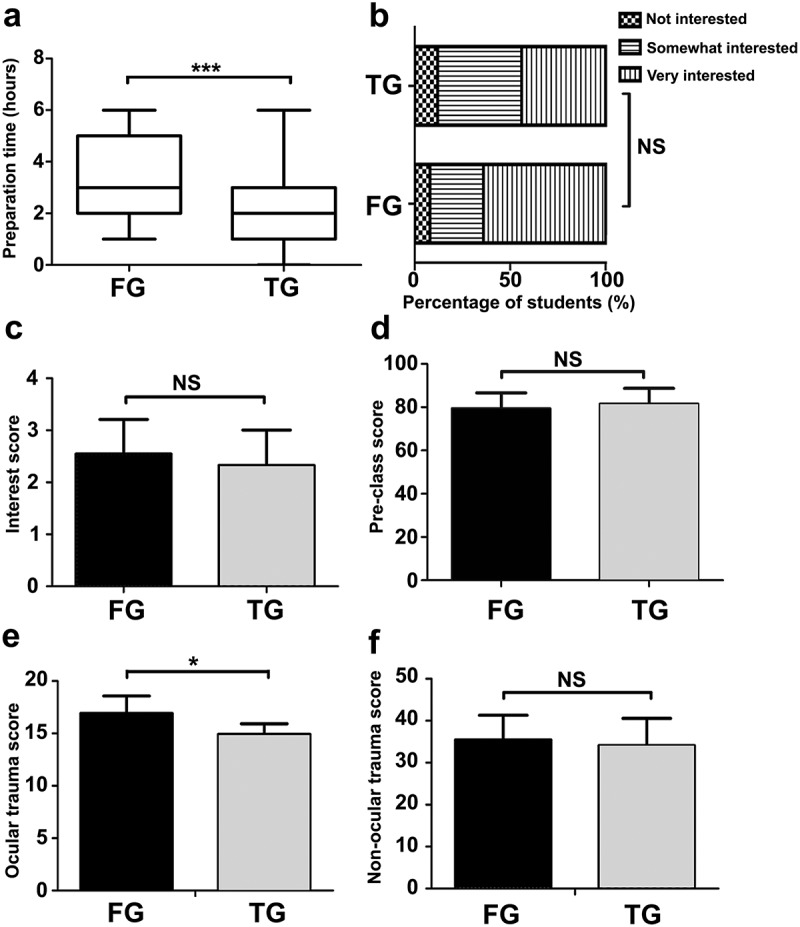Figure 2.

Feedback from students taking the flipped classroom compared to those taking the An iAraditional lecture-based classroom. (a) Box plot indicating the preparation time for the class between the two groups (hours). An independent samples t test was performed to compare the differences between the two groups. t = 3.651 (df = 74), Effect size = 0.91, ***P ≤ 0.001. (b) Stacked column charts indicating the percentage of students interested in ocular trauma after taking the flipped classroom and traditional lecture-based classroom, respectively. A Mann-Whitney U test was used to compare the data from the two groups. (c) The level of students’ interest in ocular trauma was quantified as follows: 1, not interested; 2, somewhat interested; 3, very interested. A Mann-Whitney U test was performed to compare the differences between the two groups. U = 570.0 (Z = −1.727), Effect size = 0.36, P > 0.05. (d) Comparison of students’ test scores before the classroom. Data were presented as mean ± S.D. An Independent samples t test was used to compare the differences between the two groups. t = −1.495 (df = 74), P = 0.14, Effect size = 0.45. (e and f) Comparison of students’ test scores after the classroom. The ocular trauma-related questions (e) and non-ocular trauma-related questions (f) were scored, respectively. An Independent samples t test was used to compare the differences between the two groups. Data were presented as mean ± S.D. In ocular trauma-related questions, t = 2.64 (df = 74), *P = 0.01, Effect size = 1.44; In non-ocular trauma-related questions, t = 1.24 (df = 74), P = 0.22, Effect size = 0.21. NS: not significant, FG: flipped classroom group, TG: traditional lecture-based classroom group.
